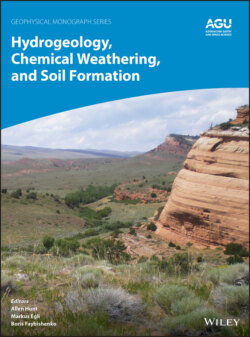Читать книгу Hydrogeology, Chemical Weathering, and Soil Formation - Allen Hunt - Страница 14
ABSTRACT
ОглавлениеThe idea of soil as a system is not yet a hundred years old. Its origins lie in Dokuchaev’s view of soil as an independent object, an idea promoted so successfully and eloquently by Hans Jenny. It was Jenny who first thought of soil as a system. His CLORPT equation focused on state factors (external drivers) of the soil system and, later, ecosystems. His approach was largely statistical and empirical. Later, a few researchers investigated energy as a soil‐system driver. A different line of investigation, spurred by Milne’s catena concept, saw soil as a spatial system. Research in this field began in earnest with Simonson’s concept of soil as an open system, which at first involved one‐dimensional soil profiles but was later extended to catenas and three‐dimensional soil landscapes, all researched using a rich variety of statistical and deterministic models. Last came the recognition that soil is part of an interdependent system. This line of enquiry began with conceptual models of the ecosphere. Since the millennium it has made big advances from cross‐disciplinary enquiries focusing on the Earth’s critical zone and interactions between soils and geomorphology, soils and hydrology, soils and life, and soils and humans.
